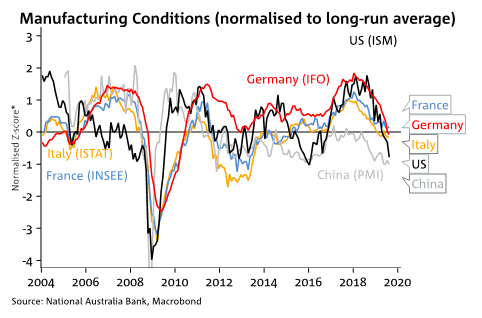Are they MAD? – This is a monumental game of chicken.
US President Donald Trump and China’s President Xi Jinping, are currently engaged in a monumental game of chicken as they drive their respective economies into a headlong conflict. The problem is that they are not just messing with their own lives, they are putting the livelihoods of billions of people at risk.
To date, each side believes that they have the upper hand and that they are taking the righteous path. President Trump accuses China of being a currency manipulator and of systematically stealing intellectual property rights of US corporations while effectively operating a closed economy.
President Xi on the other hand, claims to be a wronged global citizen who is merely being attacked by an aggressor. While there is merit on both sides, there is no doubt that the old-fashioned diplomacy of the post war period is well and truly over.
President Trump is determined to keep using the threat and implementation of tariffs as a bargaining positioning as he tries to ‘Make America Great’ once again. You may recall that we have discussed the impacts of tariffs previously and how they are essentially futile as there can only be temporary winners.
Both sides continue to escalate the tension with tit for tat tariff announcements. The markets for their part have largely ignored their antics even though volatility has increased. The concern for us, is that there are now clear signs that the political tensions are starting to spill over into the global economy.
The US ISM manufacturing indicator has just started to signal signs of economic contraction, the first time since 2016 with some of the sub-components slipping back to levels last seen in 2009.
Highlighting the slowdown in manufacturing, the ISM report noted, “Many respondents continued to note global trade softness as a reason for sluggish activity.” Respondents said, “While business is strong, there is an undercurrent of fear and alarm regarding the trade wars and a potential recession.” (Chemical Products); “Slowest month (July) this year so far in sales.” (Transportation Equipment); “Incoming sales seem to be slowing down, and this is usually our busiest season. Concerns about the economy and tariffs.” (Furniture & Related Products); “Business is starting to show signs of a broad slowdown.” (Machinery); “Generally, business remains steady. However, we continue to plan for a long trade war between the U.S. and China.” (Miscellaneous Manufacturing).
As the following chart highlights, it is not only the US and China that are starting to feel the weight of a trade war inspired slowdown.

Here in Australia, our own economy continues to show signs of sluggishness with annualised growth falling to just 1.4%, our lowest level post the GFC.
The dilemma for investors is whether this will escalate or whether growth will bounce back. Central banks have certainly been cutting cash rates in an effort to stimulate economies and we believe that the Reserve Bank of Australia will cut again in November. However, with rates already so low there is a limit on how much central banks can achieve before governments need to step in with stimulus measures of their own.
Will Trump or Xi concede defeat and bow to the pressure of the other? Or are they on a path towards Mutually Assured Destruction (MAD) of their economies?
At the moment, it is hard to see either side conceding. Trump has staked his re-election on two critical elements – the building of the border wall and achieving a beneficial trade agreement with China where the US is a clear winner.
The problem for Trump is that he is running out of time as the elections are due in November 2020. In the last week, he warned China not to try and wait him out as he would be much harder to deal with should he be re-elected.
For President Xi, he holds the presidency for life so he can afford to play the long game that the Chinese are well known for. In the shorter term, China will celebrate the 70th anniversary of the People’s Republic of China on 1 October 2019 and it has the Hong Kong riots to deal with, so it is hard to see any trade deal being announced before the end of the year.
The key to determining whether a deal can be done is watching to see if the US economy continues to slow and to watch the popularity of Donald Trump in the rust belt states. These are the critical voters that helped him win the presidency and he will need their votes once again if he is to be re-elected.
To a large extent that support will depend upon; the impact of the trade war on these voters back pockets, who the Democrats run as their candidate – Bernie Sanders polls well in the rust belt states and whether Trump can successfully lay the blame of any slowdown at the feet of the Chinese.
If you would like to find out how to traverse these issues as an investor, please reach out to us by calling us on 03 8610 6396 or at info@keepwp.com.au
Andrew Aylward is Chief Investment Officer at Keep Wealth Partners.
Keep Wealth Partners Pty Ltd (AFSL 494858). This information is of a general nature only and may not be relevant to your particular circumstances. The circumstances of each investor are different and you should seek advice from a financial planner who can consider if the strategies and products are right for you.







